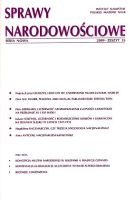Peaceful and Mutual Parliamentary Dissolution: Dissolved Unions in Sweden–Norway (1905) and Czechoslovakia (1993) and their lessons for Europe
Peaceful and Mutual Parliamentary Dissolution: Dissolved Unions in Sweden–Norway (1905) and Czechoslovakia (1993) and their lessons for Europe
Author(s): Glen M. E. DuerrSubject(s): Cultural Essay, Political Essay, Societal Essay
Published by: Instytut Slawistyki Polskiej Akademii Nauk
Keywords: Dissolution; Sweden-Norway; Czechoslovakia; multiethnic states; elites
Summary/Abstract: Multiethnic states in Europe are, in many ways, struggling to govern themselves. Belgium, for example, has had trouble forming a government based, in large measure, on rising electoral support for Flemish parties and Walloon politicians who do not trust them. This describes the political situation in a number of countries and since European states are not likely to go to war over constitutional issues, a peaceful resolution to conflict must be found. Peaceful dissolution, therefore, is an alternative to political deadlock between different groups. It is an elite driven process whereby a state is dissolved after a constitutional crisis becomes intractable and the state is dissolved without popular consultation. The examples of Sweden–Norway in 1905 and the “Velvet Divorce” of Czechoslovakia serve as case studies for the process of how dissolution occurs. Moreover, these cases also showcase how dissolution is different from other mechanisms of self-determination like decolonization, irredentism and secession.
Journal: Sprawy Narodowościowe
- Issue Year: 2009
- Issue No: 35
- Page Range: 29-46
- Page Count: 18
- Language: English

